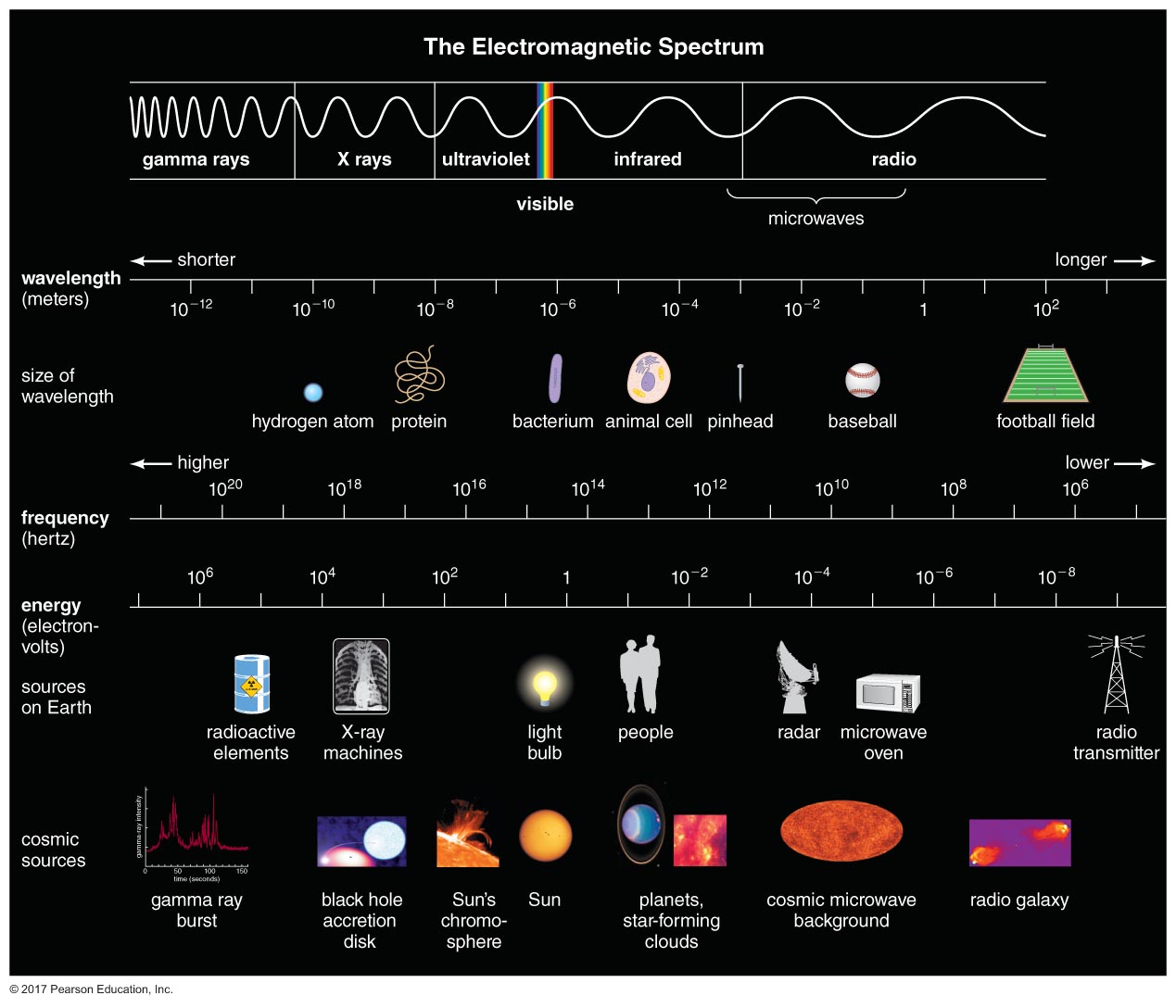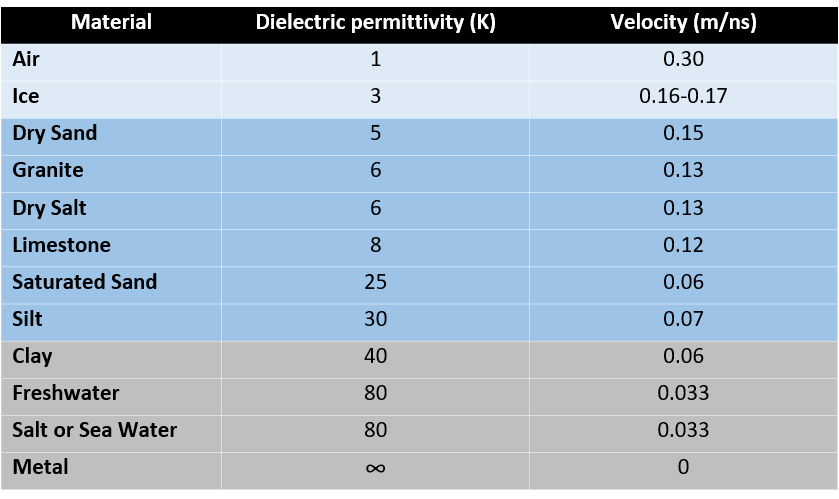Ground radar theory
Radar waves, How does Radar work, context and radar methods
Radar Waves
 source: https://jila.colorado.edu/~ajsh/courses/astr1200_18/spectrum.html
source: https://jila.colorado.edu/~ajsh/courses/astr1200_18/spectrum.html
- Wavelength = length of a single wave
- Frequency = repetition number of a wave
- Resolution = high frequency, high resolution, less depth
- Amplitude = signal strength
How does radar work
Ground radars signal frequencies vary from 12.5 MHz (Megahertz) up to normally 1 GHz (Gigahertz). The signals speed and wavelength is influenced by the characteristics of the materials and varies therefore. An electromagnetic pulse is emitted from the radar transmitter into the ground, the signal is getting slower the deeper its penetrates into the ground. When the signal meets an object it reflects from it, this is called a reflection. The signal is then reflected, travelling in direction of the surface and arrives at the receiver. The time difference between emitted and received signal is the distance in nanoseconds.

Its all about context
Dielectric permitivity (K) = Contrast - ability of a material to be electrically polarized when exposed to an electric field
\(R =\frac {\sqrt{K_1}-\sqrt{K_2} }{\sqrt{K_1}+\sqrt{K_2}}\)
Velocity (V) = speed of wavelength
\(V =\frac {c}{\sqrt{K}}\)
Attenuation (α) = depends on material, the denser the material the more signal is absorbed. It is variable to the frequency applied.
Conductivity = how much the material conducts electric waves
Radar measurements are dependent and influenced by the surface and underlying material- their dielectric permittivity. Every material has different dielectric characteristics.

Some example tasks
Try some examples for calculating the Reflectivity (K). Which materials have the highest contrast?
- Dry Sand over Wet Sand
- Dry Sand over Limestone
- Wet Sand over Water
- Water over Limestone
- Ice over Limestone
- Ice over Water
- Ice over Air
- Soil over Air
- Soil over Metal und vice versa
The possible depths of ground radar
Dense materials like clay or concrete have limitations regarding how deep you can measure, ca. around 1-10 meters even under optimal conditions and characteristics. Rock, soil, salt, fresh water and sand can be theoretical measured until ca. 100 meters. Ice and air reflections can be still reflected until approximately 1000 meters. Sea or salty water does not have a great measuring depth because its conductivity is low.
